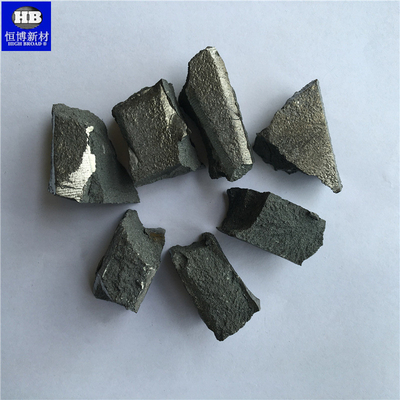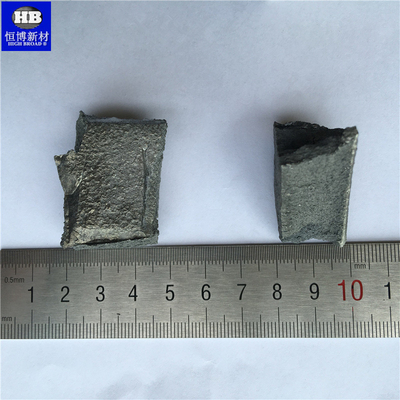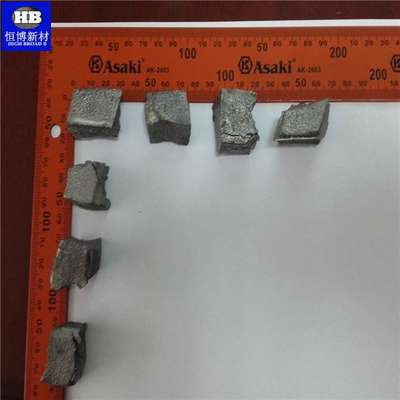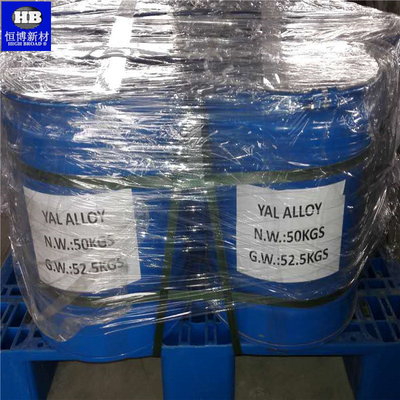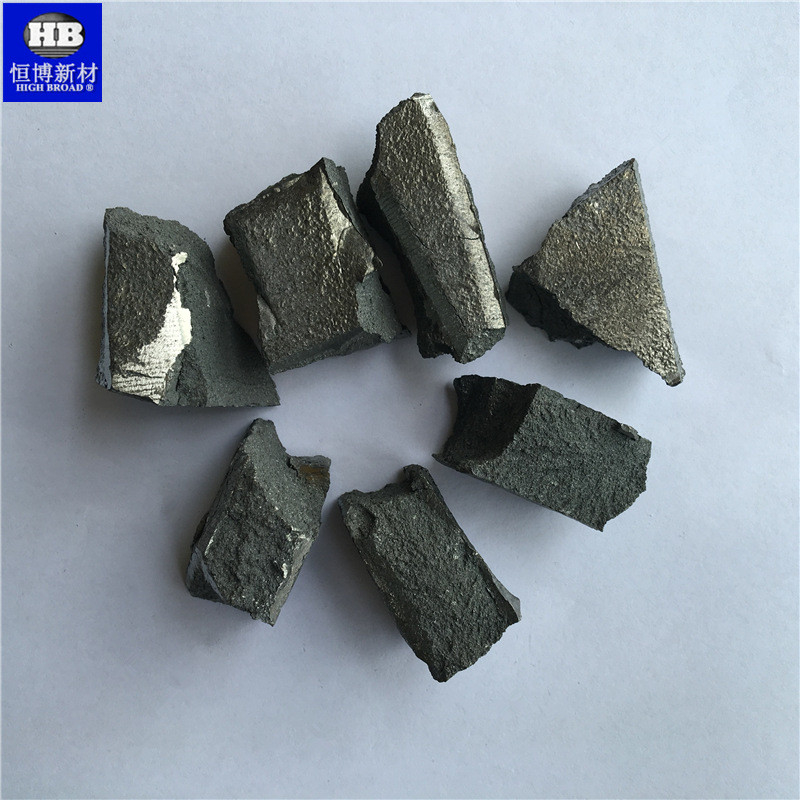Yttrium Metal Y Rare Earth Metal 99.9% For Special Steel
Product Details:
| Place of Origin: | PRC |
| Brand Name: | HB |
| Certification: | ISO, GB |
| Model Number: | Y |
Payment & Shipping Terms:
| Minimum Order Quantity: | 1kg |
|---|---|
| Price: | USD40/kg |
| Packaging Details: | Packed in drums. |
| Delivery Time: | 14 work days |
| Payment Terms: | T/T |
| Supply Ability: | 1t/month |
|
Detail Information |
|||
| Product Type: | Rare Earth Metal | Chemical Element: | Yttrium |
|---|---|---|---|
| Content(percent): | 99.9% | Name: | Yttrium Metal Y Rare Earth Metal 99.9% |
| Melting Point °C: | 1522 | Chemical Symbol: | Y |
| Boiling Point °C: | 3338 | Atomic Number: | 39 |
| Density G/cm3: | 4.47 | Atomic Weight: | 88.90585 |
| Oxide: | Y2O3 | CAS Number: | 440-65-5 |
| High Light: | Yttrium Metal Y,99.9% Yttrium Rare Earth Metal,99.9% Y Rare Earth Metal |
||
Product Description
Yttrium Metal Y Rare Earth Metal
Yttrium is a soft, silvery-white metal that is a member of Group 3 of the Periodic Table; it is the 28th most abundant element within the Earth's crust. Yttrium is stable in air, as it is protected by the formation of a resistant oxide film on its surface. It burns if ignited, and is attacked by water, which decomposes it to release hydrogen gas. Yttrium, when cut small enough, will burn spontaneously in air. Surprisingly, rocks brought back from the moon by the Apollo astronauts contained an unusually high yttrium content.
Uses
Yttrium is used in alloys which improve magnesium (Mg) castings. It gives a finer grain to chromium (Cr), molybdenum (Mo) and zirconium (Zr) metals. Also, when added to cast iron, it makes it more workable. Unusually for metals, when alloyed with chromium and aluminium it becomes heat resistant. Yttrium oxysulfide, when doped with europium, creates the red colour in televisions. Yttrium oxide is used as a glass additive, rendering it heat and shock resistant, and is therefore used in camera lenses. Yttrium oxide is also used for making superconductors, and the compound yttrium-barium-copper oxide (YB2Cu3O7-9) was the first superconductor to work at temperatures of liquid nitrogen (-183°C). Yttrium-iron-garnet (YIG) is used as resonators in frequency meters and in magnetic recording. Yttrium also has an important role within aerospace where it is used as a stabiliser and mold-former for jet engine turbines among other parts.
Applications:
-
Consumer
The red component of color television cathode ray tubes is typically emitted from an yttria (Y2O3) or yttrium oxide sulfide (Y2O2S) host lattice doped with europium (III) cation (Eu3+) phosphors. The red color itself is emitted from the europium while the yttrium collects energy from the electron gun and passes it to the phosphor. Yttrium compounds can serve as host lattices for doping with different lanthanide cations. Tb3+ can be used as a doping agent to produce green luminescence. As such yttrium compounds such as yttrium aluminium garnet (YAG) are useful for phosphors and are an important component of white LEDs.
Yttria is used as a sintering additive in the production of porous silicon nitride.
Yttrium compounds are used as a catalyst for ethylene polymerization. As a metal, yttrium is used on the electrodes of some high-performance spark plugs. Yttrium is used in gas mantles for propane lanterns as a replacement for thorium, which is radioactive.
Currently under development is yttrium-stabilized zirconia as a solid electrolyte and as an oxygen sensor in automobile exhaust systems.
-
Garnets
Yttrium is used in the production of a large variety of synthetic garnets, and yttria is used to make yttrium iron garnets (Y3Fe5O
12, also "YIG"), which are very effective microwave filters which were recently shown to have magnetic interactions more complex and longer-ranged than understood over the previous four decades. Yttrium, iron, aluminium, and gadolinium garnets (e.g. Y3(Fe,Al)5O12 and Y3(Fe,Gd)5O12) have important magnetic properties. YIG is also very efficient as an acoustic energy transmitter and transducer. Yttrium aluminium garnet (Y3Al5O12 or YAG) has a hardness of 8.5 and is also used as a gemstone in jewelry (simulated diamond). Cerium-doped yttrium aluminium garnet (YAG:Ce) crystals are used as phosphors to make white LEDs.
YAG, yttria, yttrium lithium fluoride (LiYF4), and yttrium orthovanadate (YVO4) are used in combination with dopants such as neodymium, erbium, ytterbium in near-infrared lasers. YAG lasers can operate at high power and are used for drilling and cutting metal. The single crystals of doped YAG are normally produced by the Czochralski process.
-
Material enhancer
Small amounts of yttrium (0.1 to 0.2%) have been used to reduce the grain sizes of chromium, molybdenum, titanium, and zirconium. Yttrium is used to increase the strength of aluminium and magnesium alloys. The addition of yttrium to alloys generally improves workability, adds resistance to high-temperature recrystallization, and significantly enhances resistance to high-temperature oxidation (see graphite nodule discussion below).
Yttrium can be used to deoxidize vanadium and other non-ferrous metals. Yttria stabilizes the cubic form of zirconia in jewelry.
Yttrium has been studied as a nodulizer in ductile cast iron, forming the graphite into compact nodules instead of flakes to increase ductility and fatigue resistance. Having a high melting point, yttrium oxide is used in some ceramic and glass to impart shock resistance and low thermal expansion properties. Those same properties make such glass useful in camera lenses.
-
Medical
The radioactive isotope yttrium-90 is used in drugs such as Yttrium Y 90-DOTA-tyr3-octreotide and Yttrium Y 90 ibritumomab tiuxetan for the treatment of various cancers, including lymphoma, leukemia, liver, ovarian, colorectal, pancreatic and bone cancers. It works by adhering to monoclonal antibodies, which in turn bind to cancer cells and kill them via intense β-radiation from the yttrium-90 (see monoclonal antibody therapy).
A technique called radioembolization is used to treat hepatocellular carcinoma and liver metastasis. Radioembolization is a low toxicity, targeted liver cancer therapy that uses millions of tiny beads made of glass or resin containing radioactive yttrium-90. The radioactive microspheres are delivered directly to the blood vessels feeding specific liver tumors/segments or lobes. It is minimally invasive and patients can usually be discharged after a few hours. This procedure may not eliminate all tumors throughout the entire liver, but works on one segment or one lobe at a time and may require multiple procedures.
Also see radioembolization in the case of combined cirrhosis and hepatocellular carcinoma.
Needles made of yttrium-90, which can cut more precisely than scalpels, have been used to sever pain-transmitting nerves in the spinal cord,and yttrium-90 is also used to carry out radionuclide synovectomy in the treatment of inflamed joints, especially knees, in sufferers of conditions such as rheumatoid arthritis.
A neodymium-doped yttrium-aluminium-garnet laser has been used in an experimental, robot-assisted radical prostatectomy in canines in an attempt to reduce collateral nerve and tissue damage, and erbium-doped lasers are coming into use for cosmetic skin resurfacing.
-
Superconductors
Yttrium is a key ingredient in the yttrium barium copper oxide (YBa2Cu3O7, aka 'YBCO' or '1-2-3') superconductor developed at the University of Alabama and the University of Houston in 1987. This superconductor is notable because the operating superconductivity temperature is above liquid nitrogen's boiling point (77.1 K). Since liquid nitrogen is less expensive than the liquid helium required for metallic superconductors, the operating costs for applications would be less.
The actual superconducting material is often written as YBa2Cu3O7–d, where d must be less than 0.7 for superconductivity. The reason for this is still not clear, but it is known that the vacancies occur only in certain places in the crystal, the copper oxide planes, and chains, giving rise to a peculiar oxidation state of the copper atoms, which somehow leads to the superconducting behavior.
The theory of low temperature superconductivity has been well understood since the BCS theory of 1957. It is based on a peculiarity of the interaction between two electrons in a crystal lattice. However, the BCS theory does not explain high temperature superconductivity, and its precise mechanism is still a mystery. What is known is that the composition of the copper-oxide materials must be precisely controlled for superconductivity to occur.
This superconductor is a black and green, multi-crystal, multi-phase mineral. Researchers are studying a class of materials known as perovskites that are alternative combinations of these elements, hoping to develop a practical high-temperature superconductor.
-
Lithium batteries
Yttrium is used in small quantities in the cathodes of some Lithium iron phosphate battery (LFP), which are then commonly called LiFeYPO4 chemistry, or LYP. Similar to LFP, LYP batteries offer high energy density, good safety and long life. But LYP offers higher cathode stability, and prolongs the life of the battery, by protecting the physical structure of the cathode, especially at higher temperatures and higher charging / discharge current. LYP batteries find use in stationary applications (off-grid solar systems), electric vehicles (some cars), as well other applications (submarines, ships), similar to LFP batteries, but often at improved safety and cycle life time. LYP cells have essentially the same nominal voltage as LFP; 3.25 V, but the maximum charging voltage is 4.0 V, and the charging and discharge characteristics are very similar.
-
Other applications
In 2009, Professor Mas Subramanian and associates at Oregon State University discovered that yttrium can be combined with indium and manganese to form an intensely blue, non-toxic, inert, fade-resistant pigment, YInMn blue, the first new blue pigment discovered in 200 years.

70 Chezhan North Road,Changsha, China 410100
Tel:+86-731-85713359 Fax:+86-731-85716569
Wechat/Whatsapp: +8618507315452
chris@hbnewmaterial.com chrishuang@vip.qq.com




